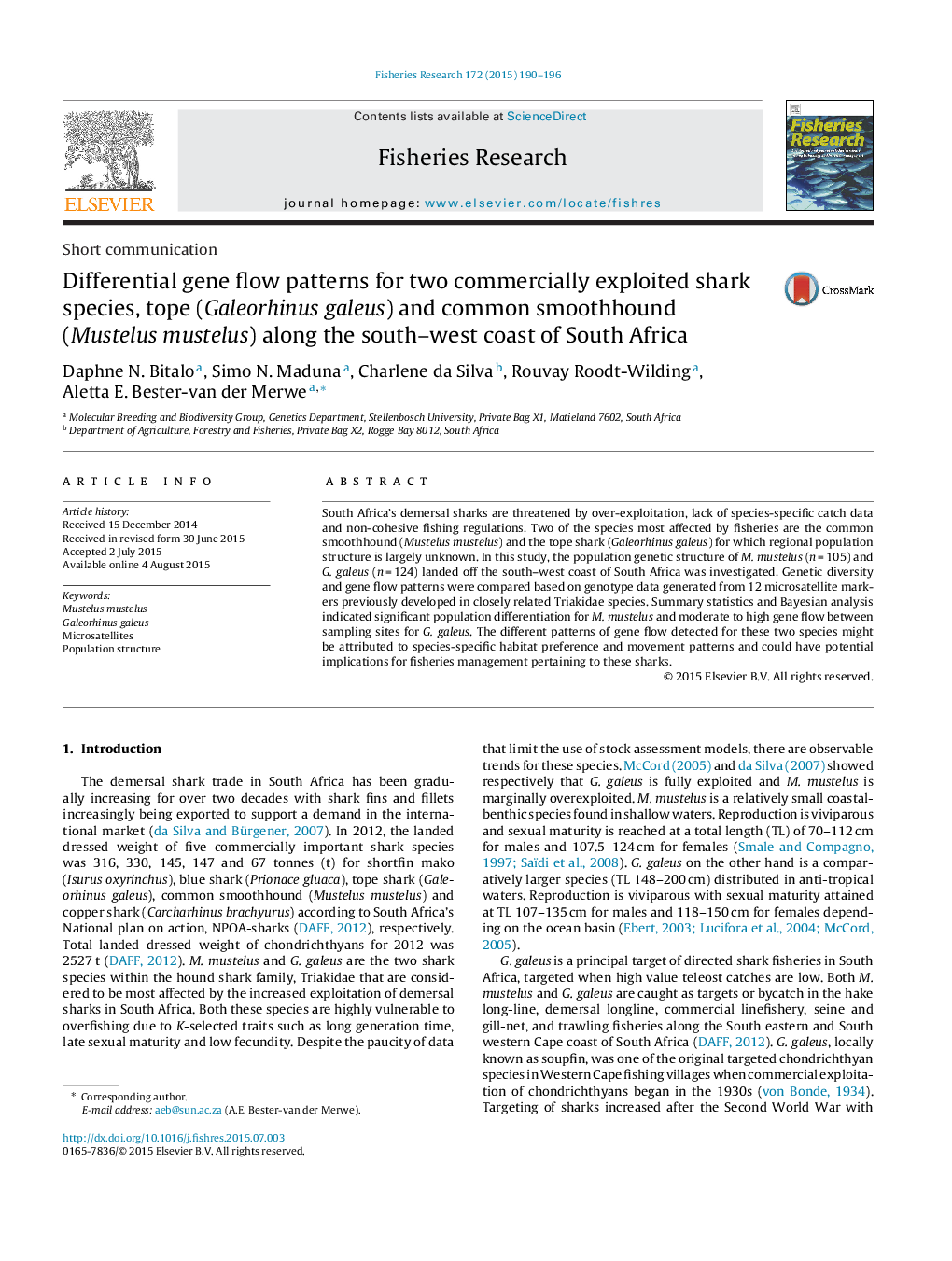| Article ID | Journal | Published Year | Pages | File Type |
|---|---|---|---|---|
| 6385434 | Fisheries Research | 2015 | 7 Pages |
â¢Elucidation of gene flow patterns of two commercially exploited shark species along the South African coastline.â¢Mustelus mustelus and Galeorhinus galeus are defined by differing patterns of gene flow based on microsatellite genotype data.â¢Two potential management units were detected for Mustelus mustelus.â¢A single admixed stock was observed for Galeorhinus galeus.â¢Genetic data can be integrated into new management recommendations pertaining to South Africa's demersal shark fisheries.
South Africa's demersal sharks are threatened by over-exploitation, lack of species-specific catch data and non-cohesive fishing regulations. Two of the species most affected by fisheries are the common smoothhound (Mustelus mustelus) and the tope shark (Galeorhinus galeus) for which regional population structure is largely unknown. In this study, the population genetic structure of M. mustelus (n = 105) and G. galeus (n = 124) landed off the south-west coast of South Africa was investigated. Genetic diversity and gene flow patterns were compared based on genotype data generated from 12 microsatellite markers previously developed in closely related Triakidae species. Summary statistics and Bayesian analysis indicated significant population differentiation for M. mustelus and moderate to high gene flow between sampling sites for G. galeus. The different patterns of gene flow detected for these two species might be attributed to species-specific habitat preference and movement patterns and could have potential implications for fisheries management pertaining to these sharks.
